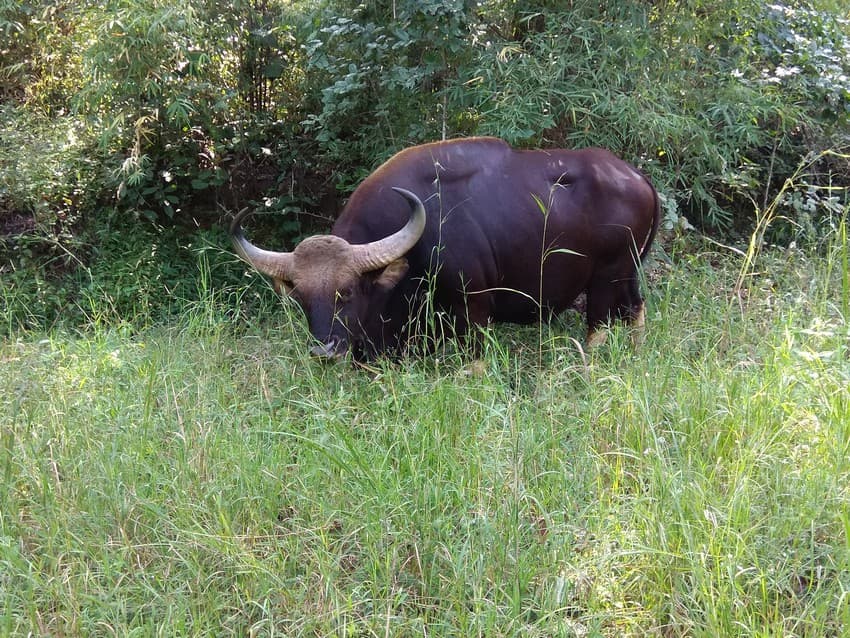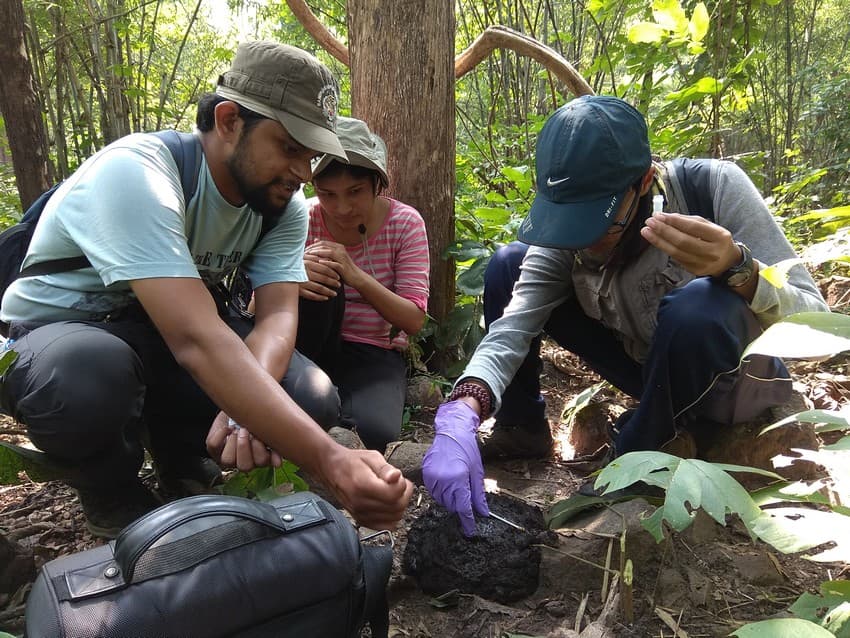Project Title
Investigating the Effects of Road Network on Genetic Connectivity and Population Structure of Gaur (Bos gaurus) in Central Indian Landscape

Project Grantee
Abhinav Tyagi (Ph.D. scholar Conservation Genomics, NCBS, Bangalore; M.Sc. Biodiversity and Conservation)
Q & A with the Grantee
1) How is the investigation of impacts of landscape features such as roads and highways on the genetic connectivity of an ungulate species such as the gaur conducted?
We collected fecal samples as DNA source. We employed the state-of-the-art Next Generation Sequencing (NGS) based methods to obtain genetic information. We then used this genome-wide data of hundreds of Single Nucleotide Polymorphism (SNP) markers to estimate genetic diversity and differentiation. To quantify the effects of landscape features such as roads on genetic connectivity, we used landscape genetic modelling and quantified the resistance offered by landscape features to animal movement and eventually gene flow using genetic data as a response variable.
2) What was the one watershed experience in the course of the project for you?
Pointing out only one is difficult as my learning curve was quite steep during this project. But, as I mentioned, we used NGS-based methods to obtain genetic data using fecal DNA, and we faced a lot of challenges. Using fecal DNA for NGS is not easy as DNA is obtained in low concentrations, is degraded and often mixed with DNA from other organisms like microbes present in the gut of the animal. With methods like enrichment, we were able to overcome these issues. That moment when the entire methodology was finalised, was a significant one. Also, as per our knowledge, this is the first population genomic study on any herbivore in the country especially using SNPs from fecal samples. And now that the method is standardised, it will enable us to study various other endangered and cryptic species at the population level using fecal samples.
3) What questions will the genetics approach in this study help to answer?
Genetics-based approaches have helped to devise conservation and management strategies for more than two decades now. Genetics corroborates the ecological evidence acquired through traditional animal monitoring methods and also provides insights into genetic diversity, inbreeding, evolutionary history, genetic load, and much more. In this study, we were interested in understanding the genetic diversity and level of genetic connectivity of gaur populations in the landscape. We also investigated how different landscape features impacted gene flow. We demonstrated how traffic roads and loss of forest cover is affecting the gaur movement. This approach is crucial for devising conservation plans, mitigation of negative impacts of developmental projects, and also aids in selecting individuals for translocation from one population to another.

Images courtesy: Abhinav Tyagi
